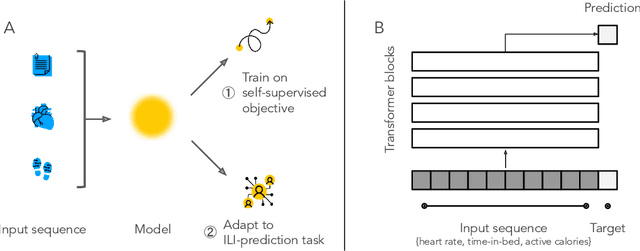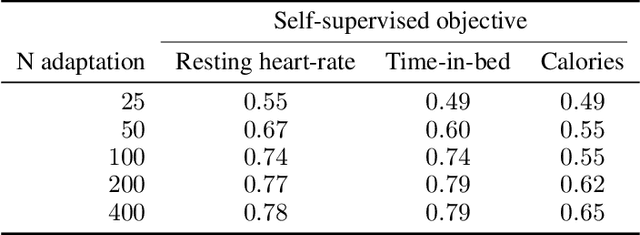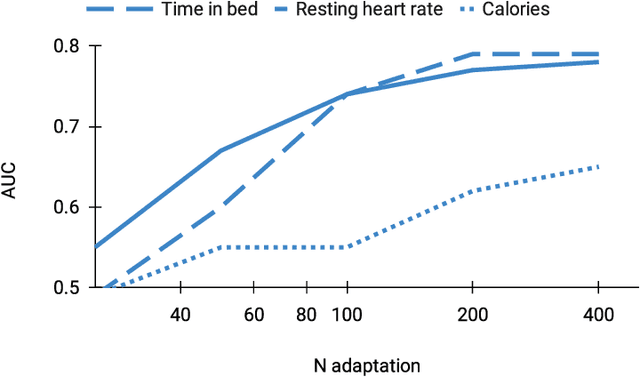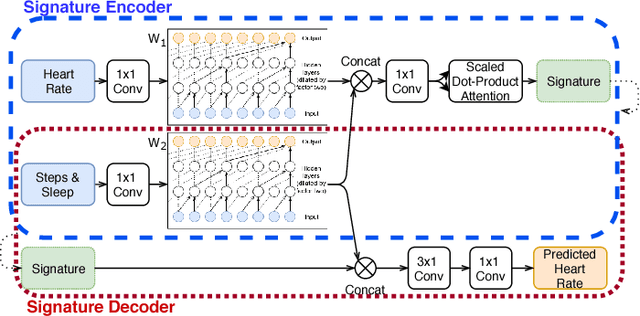Filip Jankovic
Self-supervision of wearable sensors time-series data for influenza detection
Dec 27, 2021


Abstract:Self-supervision may boost model performance in downstream tasks. However, there is no principled way of selecting the self-supervised objectives that yield the most adaptable models. Here, we study this problem on daily time-series data generated from wearable sensors used to detect onset of influenza-like illness (ILI). We first show that using self-supervised learning to predict next-day time-series values allows us to learn rich representations which can be adapted to perform accurate ILI prediction. Second, we perform an empirical analysis of three different self-supervised objectives to assess their adaptability to ILI prediction. Our results show that predicting the next day's resting heart rate or time-in-bed during sleep provides better representations for ILI prediction. These findings add to previous work demonstrating the practical application of self-supervised learning from activity data to improve health predictions.
Learning Individualized Cardiovascular Responses from Large-scale Wearable Sensors Data
Dec 04, 2018


Abstract:We consider the problem of modeling cardiovascular responses to physical activity and sleep changes captured by wearable sensors in free living conditions. We use an attentional convolutional neural network to learn parsimonious signatures of individual cardiovascular response from data recorded at the minute level resolution over several months on a cohort of 80k people. We demonstrate internal validity by showing that signatures generated on an individual's 2017 data generalize to predict minute-level heart rate from physical activity and sleep for the same individual in 2018, outperforming several time-series forecasting baselines. We also show external validity demonstrating that signatures outperform plain resting heart rate (RHR) in predicting variables associated with cardiovascular functions, such as age and Body Mass Index (BMI). We believe that the computed cardiovascular signatures have utility in monitoring cardiovascular health over time, including detecting abnormalities and quantifying recovery from acute events.
 Add to Chrome
Add to Chrome Add to Firefox
Add to Firefox Add to Edge
Add to Edge